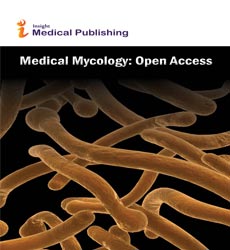Abstract
Biology, genetics, functional genomics, evolution, and epidemics caused by the stripe rust pathogen
Puccinia striiformis, an obligate biotrophic parasite, causes stripe rust of wheat, barley, and many grasses. Stripe rust of wheat is important worldwide and can cause yield losses up to 4.5 million tones plus millions of dollars spent on chemical control in the United States. The basidiomycete fungus has been recently demonstrated, under controlled conditions, to have a heteroecious macrocyclic life cycle consisting of five spore stages with uredinial, telial, and basidial stages on cereals and grasses, and pycnial and aecial stages on Berberis and Mahonia species. However, the role of alternate hosts for sexual reproduction of the fungus under the natural conditions in the United States is limited due to the enclosed telia that are covered by host epidermis, lack of dormancy, and degradation of teliospores in the winter, in addition to the dry weather conditions when teliospores are able to germinate and the mismatching phenology of barberry plants. As a suicidal factor, telial formation reduces the production of urediniospores, and thus reduces the aggressiveness and fitness of the pathogen. Mapping populations have been developed through sexual reproduction on barberry and used to construct a consensus map of the fungus and for mapping virulence loci using simple sequence repeat (SSR), single-nucleotide polymorphism (SNP), and genotyping by sequencing (GBS) markers. Molecular markers also have been used to determine the genetic structure of the pathogen population and evolutionary mechanisms. Mutation and somatic recombination have been determined as major mechanisms for the pathogen to produce new races and genotypes, and host selection plays an important role in shifting the population. As auxiliary hosts, grasses have been found to harbor more diverse populations. The secretomics of the stripe rust pathogen is studied to identify virulence effectors and determine mechanisms of the pathogen-host interactions for developing more efficient strategies for control of stripe rust
Author(s):
Xianming Chen
Abstract | PDF
Share this

Google scholar citation report
Citations : 164
Medical Mycology: Open Access received 164 citations as per google scholar report
Abstracted/Indexed in
- Google Scholar
- China National Knowledge Infrastructure (CNKI)
- Directory of Research Journal Indexing (DRJI)
- WorldCat
- Publons
- Geneva Foundation for Medical Education and Research
- Secret Search Engine Labs
Open Access Journals
- Aquaculture & Veterinary Science
- Chemistry & Chemical Sciences
- Clinical Sciences
- Engineering
- General Science
- Genetics & Molecular Biology
- Health Care & Nursing
- Immunology & Microbiology
- Materials Science
- Mathematics & Physics
- Medical Sciences
- Neurology & Psychiatry
- Oncology & Cancer Science
- Pharmaceutical Sciences
